As the Thursday RGVCTMN crew of Ramsey Park volunteers finished a project, we ended up with a small clearing ready for re-vegetation. Before we could contemplate what to plant, a surprise visitor appeared. We saw him talking with Frank Wiseman, and then he was gone. However, he had kindly offered us some milkweed plants.
If you aren’t familiar with the current milkweed controversy, Google: Tropical milkweed and monarchs controversy.
Due to the recent articles that have come to our attention, we wanted a milkweed that is native to this area. We were looking to establish a colony of Zizotes, Asclepias oenotheroides, but had been unsuccessful in finding a supplier
Voila! Our generous benefactor offered us exactly what we had been looking for.
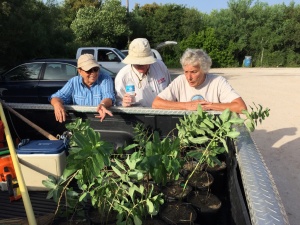
Tropical milkweed or veintiunilla, Asclepias curassavica, although prevalent at nurseries in the Valley, is an introduced species.
Happy for the generous donation, we collected the zizotes two days later and planted them the following Thursday at a garden now named Zizotes Circle, in their honor. Zizotes Circle is along the Upper Mown Trail near Ani Cut at the park’s original bird blind.
After planting the zizotes, we scrounged around for suitable mulch, dragged 150 feet of hose from a spigot along Ebony Loop and gave the plants a deep watering.
As we walked away, the newly planted zizotes looked rather pitiful.
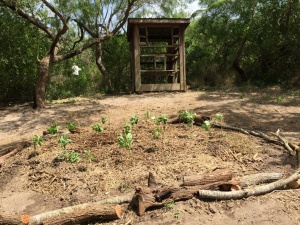
By the next Thursday, they were hearty and vibrant. Most were blooming, all had buds, and one had seed pods already formed. We watered again. By week three, everything was hunky-dory. We were impressed with the hearty little plants.
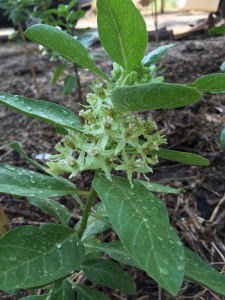
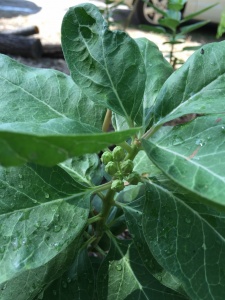
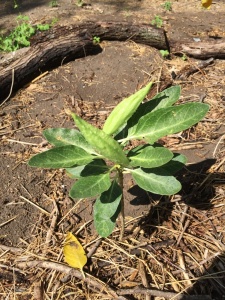
But, alas! By the fourth week, a zizotes plant was wilted! We had a problem. APHIDS! We were doomed!
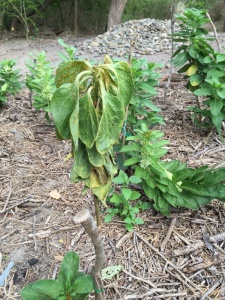
I shot a photo with my phone, raced back to Frank and Barbara Peet wielding the distressed plant photo. Frank said, “Alcohol.” I cringed. He then said, “Dish soap.” “That’s for oiled ducks,” I replied, in a panicked state. He said, “Christina.” I was already e-mailing the photo to Christina Mild, who forwarded it to Mike Heep.
That afternoon on the phone, Mike Heep said, “Alcohol,” and before I could wail, described how he wages war on aphids. The alcohol dissipates quickly and leaves no toxic residue, he assured me. (Note: Frank is always right.)
The next day, I purchased several bottles of 70 percent rubbing alcohol on my way to Ramsey Park. I poured two bottles into a little plastic pail, soaked a paper towel and squeezed it over the offending marauders on the zizotes leaves. I repeated this procedure, checking the undersides of the fleshy leaves and gently wiping away the yellow miscreants. Only six plants showed aphids. Another plant was being visited by a Ladybug – they eat aphids so I left that plant alcohol free. The next week, more zizotes were affected, but with fewer aphids and the plants remained healthy looking. Another Ladybug had showed up. I repeated the alcohol procedure.
Unfortunately, the first plant to be affected could not be revived. It was sucked dry by the aphids. We had not caught the attack in time. Amazingly, its numerical relief had already reported for duty. Our first seed pod had just split open. I snapped it off the stalk, wrapped it in a paper towel and pushed it into my pocket for safe-keeping.
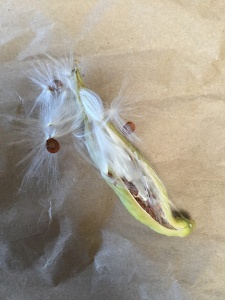
At last check, new growth is shooting through the soil around all the originally planted stalks. We are deeming this project as successfully establishing a new colony of plants into Ramsey Park. Yay, Team!

Leave a Reply